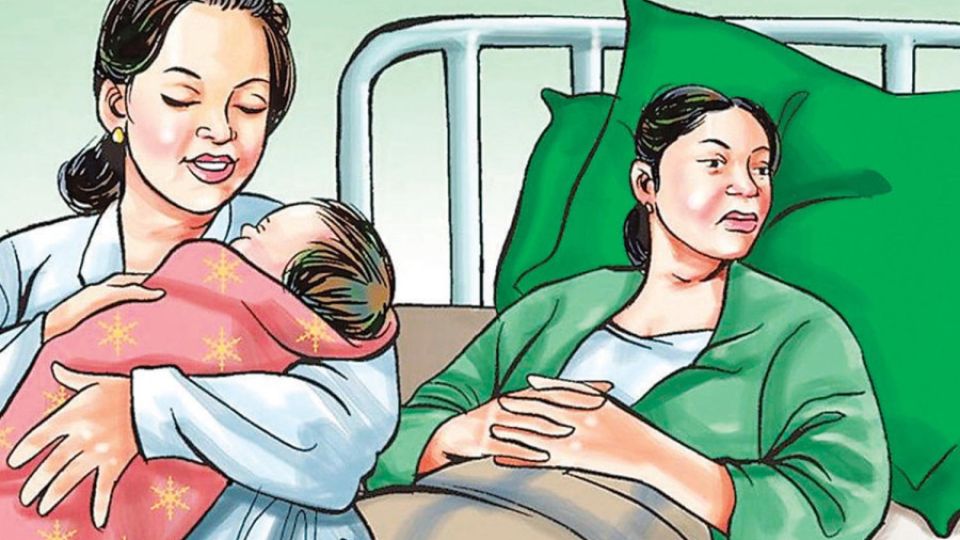April 11, 2025
KATHMANDU – Nepal has reduced maternal deaths by over 70 percent since 2000, according to a new report by the World Health Organisation.
The UN health body, in its report released on Tuesday, stated that currently 142 Nepali women die from maternity-related complications per 100,0000 live births.
A previous study carried out by the National Statistics Office in 2021 had shown 151 maternal deaths per 100,000 live births.
Similarly, neonatal mortality now stands at 16.6 per 1,000 live births, and the stillbirth rate has decreased to 13.5 per 1,000 births, according to the UN health body.
The Nepal Demographic and Health Survey-2022, carried out by the Ministry of Health and Population, showed that 21 neonates die per 1,000 live births.
“Congratulations to the Government of Nepal, the Ministry of Health and Population, partners and all individuals whose contributions have led to Nepal achieving a significant reduction in maternal and newborn deaths. While celebrating this progress, it is also important to acknowledge the persistent health inequalities between provinces and districts that limit access to quality maternity services for far too many women and families,” said Dr Rajesh Sambhajirao Pandav, WHO representative to Nepal.
“To close this gap and to ensure Nepal continues to stay on track to meet the Sustainable Development Goals (SDGs) target on MMR, we must prioritise women’s and newborns’ health and well-being and invest accordingly.”
The report comes at a time when humanitarian funding cuts are having severe impacts on essential healthcare in many parts of the world, forcing countries to roll back vital services for maternal, newborn and child health. These cuts have led to facility closures, loss of health workers and disrupted supply chains for lifesaving supplies and medicines such as treatments for haemorrhage, pre-eclampsia and malaria—all leading causes of maternal deaths, according to the WHO.
Women today are more likely than ever to survive pregnancy and childbirth, but there is a threat of major backsliding as unprecedented aid cuts take effect around the world, according to the UN health body.
Health officials in Nepal report that several ongoing healthcare programmes have already been affected after the US government suspended nearly all foreign assistance worldwide for three months starting from the last week of January, soon after Donald Trump assumed presidency.
The terminated programmes include neonatal care training for hundreds of doctors and nurses and various programmes related to the Sustainable Development Goals, including maternal and child health, nutrition, reproductive health, and family planning.
“Without urgent action, the agencies warn that pregnant women in multiple countries will face severe repercussions—particularly those in humanitarian settings where maternal deaths are already alarmingly high,” reads the report.
Beyond ensuring critical services during pregnancy, childbirth and the postnatal period, the report notes the importance of efforts to enhance women’s overall health by improving access to family planning services, as well as preventing underlying health conditions like anaemias, malaria and noncommunicable diseases that increase risks. It will also be critical to ensure girls stay in school and that women and girls have the knowledge and resources to protect their health, the report says.
The WHO has emphasised that urgent investment is needed to prevent maternal deaths. The world is currently off-track to meet the UN’s Sustainable Development Goal target for maternal survival. Globally, the maternal mortality ratio would need to fall by around 15 percent each year to meet the 2030 target – significantly increasing from current annual rates of decline of around 1.5 percent.


